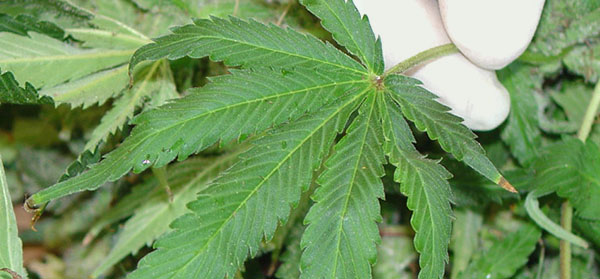Introduction
From the cocaine dealer on the corner to the clandestine meth lab in the abandoned trailer to hundreds of pounds of marijuana seized by the Coast Guard, illegal drugs permeate modern society. Even prescription medication can be an illegal drug if sold or given to someone for whom it was not prescribed. Over the past decade, new and more dangerous synthetic drugs have come to market. Their producers attempt to circumvent the law by continuously altering the chemical composition of the substances to avoid prosecution.
The illegal drug trade creates a global black market economy that puts the public at risk, not just from the substances being distributed, but also from the subsequent crimes committed by users, traffickers and manufacturers. These crimes typically include burglary, assault and fraud, but can also involve more serious crimes such as homicide, abduction and human trafficking.

Marijuana leaf.
Forensic drug chemistry uses a series of processes performed in the field or laboratory to detect the presence or absence of controlled substances. Chemical analysis performed in the laboratory on submitted evidence detects and identifies illegal drugs, and helps law enforcement prosecute offenders. This practice uses a variety of chemical analysis methods to conduct both presumptive and confirmatory tests on seized material suspected to be or contain illegal substances. Results from this analysis often serve as the basis for criminal proceedings and help to determine sentencing for convicted offenders.